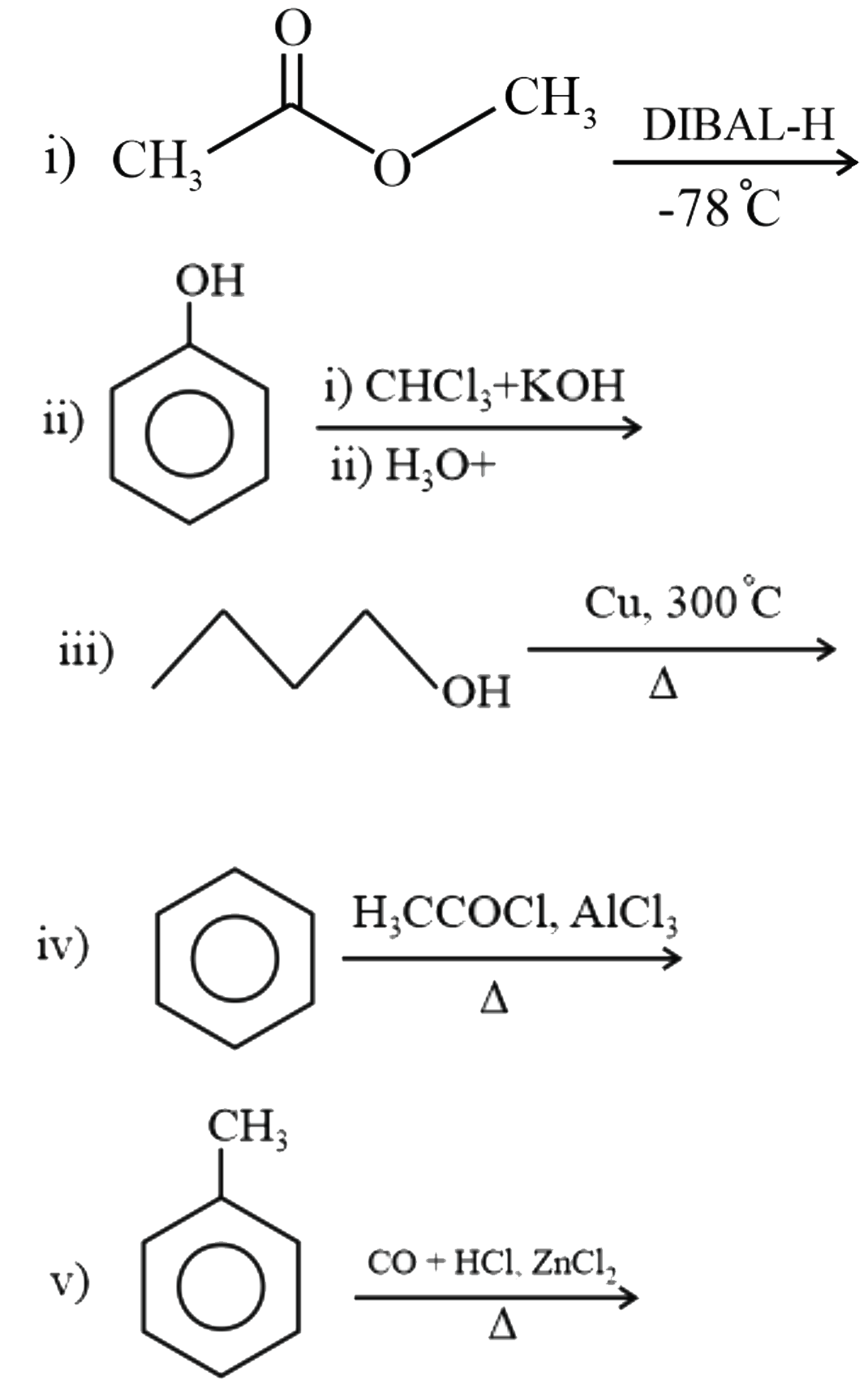In which of the following reaction t−butylbenzene is formed :
Benzene +t−butyl chloride AlCl3−−→
Benzene +(CH3)2C=CH2BF3.HF−−−−→
Benzene + t−butylalcoholH2SO4−−−→
All of these
The correct Answer is:D
To determine in which of the given reactions t−butylbenze≠ is formed, we can analyze each reaction step-by-step.
1. Identify the Reactions:
We need to analyze the three reactions provided in the question to see if they lead to the formation of t−butylbenze≠.
2. First Reaction: Friedel-Crafts Alkylation:
- In this reaction, t−butylchlor is reacted with benze≠ in the presence of a Lewisac (like AlCl3).
- The t−butylchlor can be represented as (CH3)3CCl.
- The Lewis acid facilitates the formation of a t−butylcation (a tertiary carbocation).
- This cation then reacts with benzene, replacing one of the hydrogen atoms, resulting in the formation of t−butylbenze≠.
- Conclusion: This reaction produces t−butylbenze≠.
3. Second Reaction: Alkene Reaction with Benzene:
- Here, benzene is reacted with an alkene, specifically (CH3)2C=CH2 (which is isobutylene).
- The double bond in the alkene breaks, and the carbon with the double bond attaches to the benzene ring.
- This carbon is connected to three other carbons (making it a tertiary carbon), leading to the formation of t−butylbenze≠.
- Conclusion: This reaction also produces t−butylbenze≠.
4. Third Reaction: Reaction of Tertiary Butyl Alcohol:
- In this case, t−butylalcohol (which can be represented as (CH3)3COH) is reacted in the presence of sulfuric acid (H2SO4).
- The acid protonates the alcohol, leading to the formation of a t−butylcation.
- This cation then reacts with benzene, replacing one hydrogen atom and forming t−butylbenze≠.
- Conclusion: This reaction also produces t−butylbenze≠.
5. Final Conclusion:
Since all three reactions lead to the formation of t−butylbenze≠, the answer to the question is that t−butylbenze≠ is formed in all of the reactions.
Answer:
All of these reactions produce t−butylbenze≠.
---
We need to analyze the three reactions provided in the question to see if they lead to the formation of t−butylbenze≠.
- In this reaction, t−butylchlor is reacted with benze≠ in the presence of a Lewisac (like AlCl3).
- The t−butylchlor can be represented as (CH3)3CCl.
- The Lewis acid facilitates the formation of a t−butylcation (a tertiary carbocation).
- This cation then reacts with benzene, replacing one of the hydrogen atoms, resulting in the formation of t−butylbenze≠.
- Conclusion: This reaction produces t−butylbenze≠.
- Here, benzene is reacted with an alkene, specifically (CH3)2C=CH2 (which is isobutylene).
- The double bond in the alkene breaks, and the carbon with the double bond attaches to the benzene ring.
- This carbon is connected to three other carbons (making it a tertiary carbon), leading to the formation of t−butylbenze≠.
- Conclusion: This reaction also produces t−butylbenze≠.
- In this case, t−butylalcohol (which can be represented as (CH3)3COH) is reacted in the presence of sulfuric acid (H2SO4).
- The acid protonates the alcohol, leading to the formation of a t−butylcation.
- This cation then reacts with benzene, replacing one hydrogen atom and forming t−butylbenze≠.
- Conclusion: This reaction also produces t−butylbenze≠.
Since all three reactions lead to the formation of t−butylbenze≠, the answer to the question is that t−butylbenze≠ is formed in all of the reactions.
All of these reactions produce t−butylbenze≠.
Topper's Solved these Questions
- BOOK - ALLENCHAPTER - ALKENE, ALKANE & ALKYNE EXERCISE - EXERCISE-1119videos
ALKENE, ALKANE & ALKYNE
- BOOK - ALLENCHAPTER - ALKENE, ALKANE & ALKYNE EXERCISE - EXERCISE-2103videos
ALKENE, ALKANE & ALKYNE
- BOOK - ALLENCHAPTER - AIIMS 2019EXERCISE - CHEMISTRY40videos
AIIMS 2019
- BOOK - ALLENCHAPTER - ALKYL AND ARYL HALIDEEXERCISE - EXERCISE-05 (B)35videos
ALKYL AND ARYL HALIDE
Similar Questions
Knowledge Check
- Question 1 - Select One
In which of the following reactions tertiary butyl benzene is formed ?
A B
B C
C DAll of these
DAll of these - Question 2 - Select One or More
In which of the following reaction phthalic acid can be formed?
A B
B C
C D
D
- Question 3 - Select One
In which of the following reactions product formed is same ?
 A(i) and (ii)B(ii) and (iii)C(i) and (iii)D(i), (ii) and (iii)
A(i) and (ii)B(ii) and (iii)C(i) and (iii)D(i), (ii) and (iii)
In which of the following redox reaction precipitate is not formed?
View SolutionIn which of the following redox reaction precipitate is not formed?
View SolutionIn which fo the following reaction the product formed by anti markonikoff rule is observed:
View SolutionIn how many of the following reactions aldehyde is formed as a product?

 View Solution
View SolutionIn which of the following reactions phenol is not obtained:
View Solution
